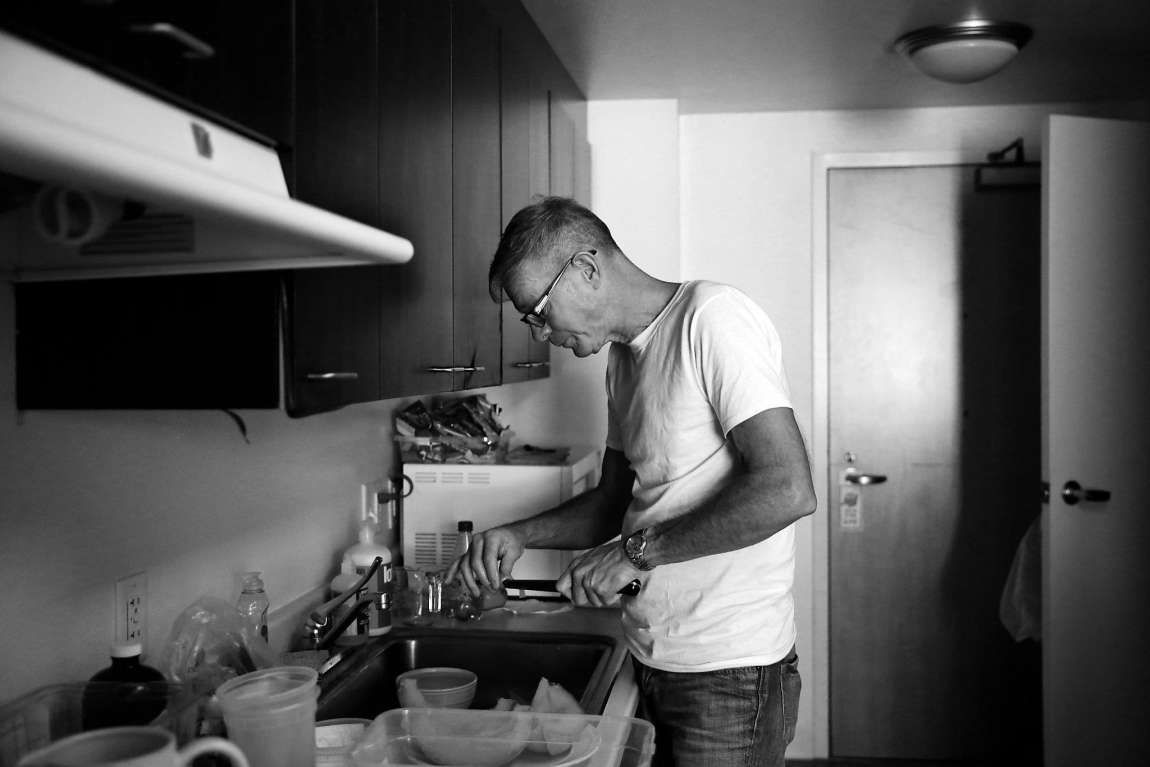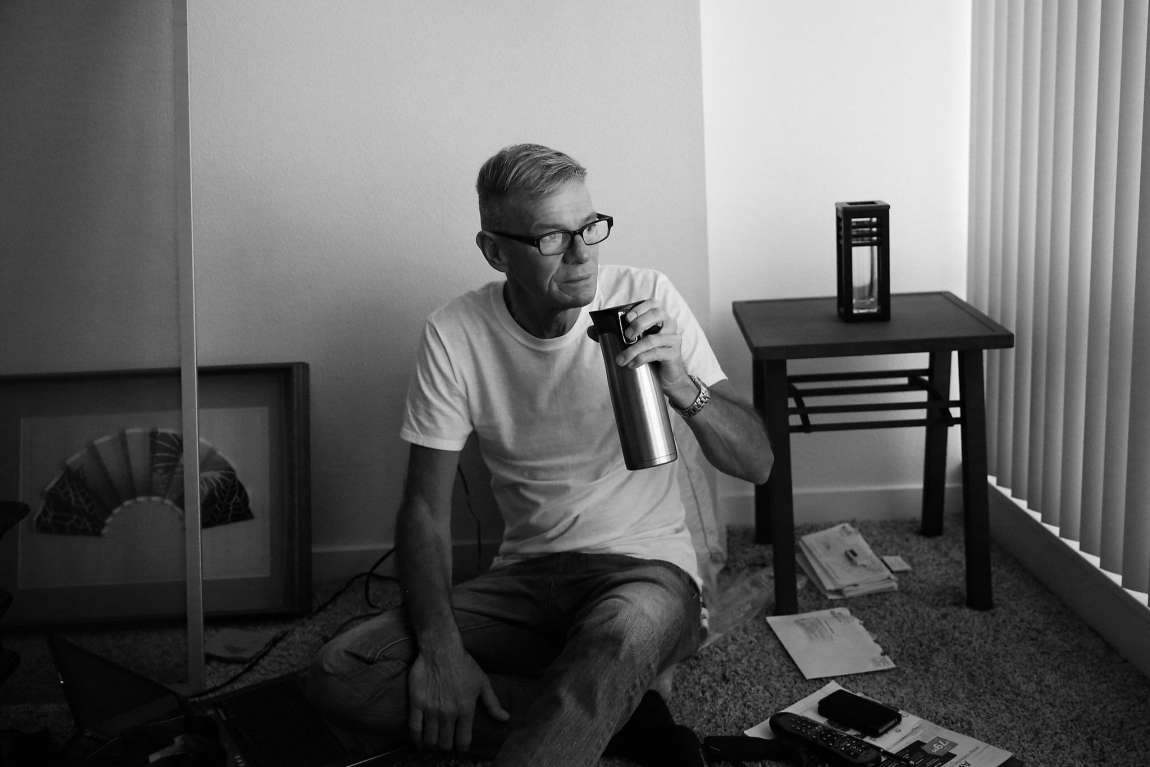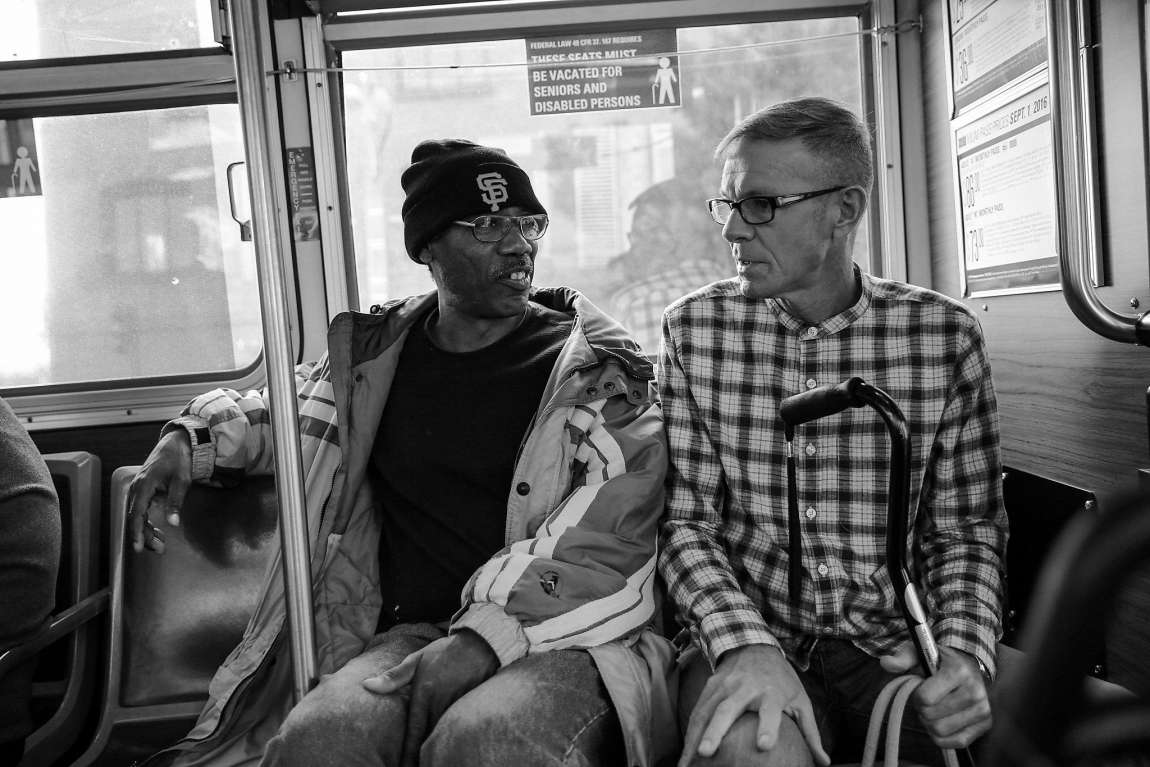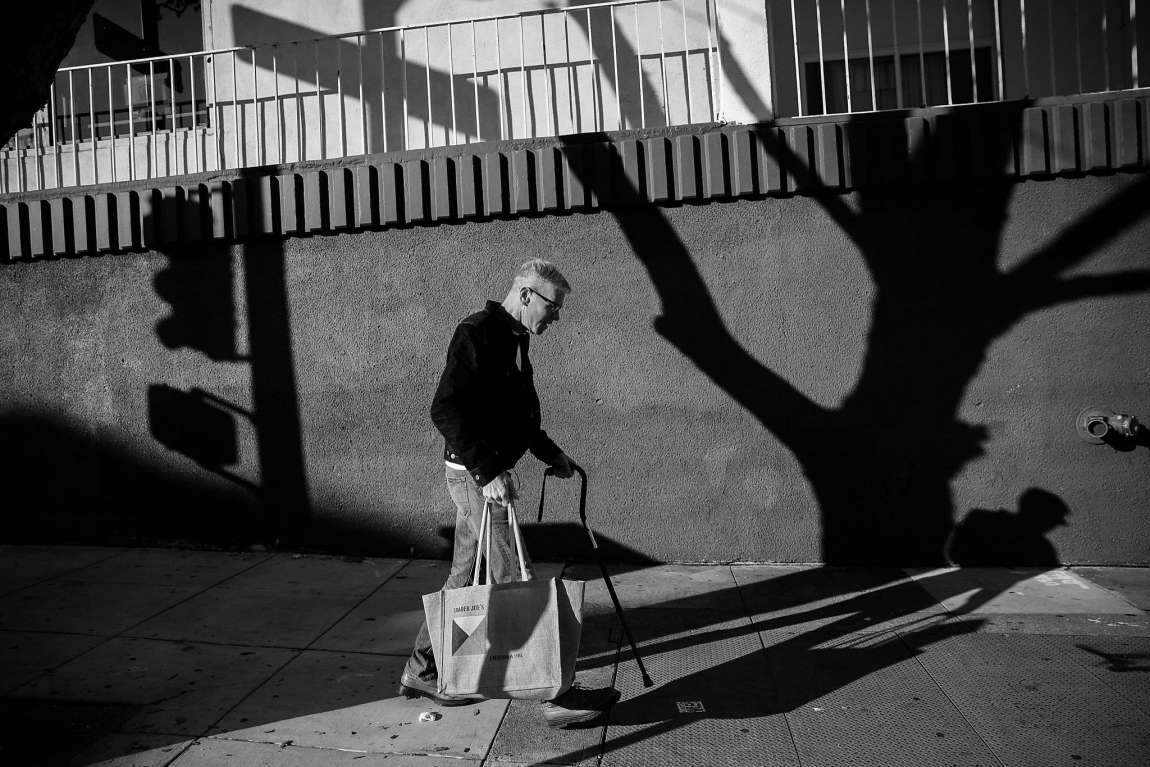
Larry Williams sat on a thick folded blanket on the floor of his studio apartment, back to the wall, an ancient-looking laptop perched on his thighs.
It was the first time he’d turned on his laptop in years — it took two days just to update the software, he said with a chuckle. Until recently the laptop was stowed away at a friend’s house, along with the muted green cardigan he’s wearing and the stylish hats stacked on his dresser.
I’ve made it this far,” he said. “But I assure you, there are people out there who won’t. This isn’t all about me
More than five years ago a car accident threw Williams’ life into absolute disarray, leaving him traumatized and without a job or home. He was given this permanent place to live only three months ago.
When he walked into the Fillmore district apartment that September day, he fell to his knees and wept. Even just talking about it Williams choked up.
“I’ve made it this far,” he said. “But I assure you, there are people out there who won’t. This isn’t all about me.”
It took years for the 57-year-old Williams, a son of the Midwest with a fierce stubborn streak, to admit that he wasn’t going to easily lift himself out of the intolerable homelessness he landed in after the 2011 car accident. When he finally accepted that his life was never going to be the same, he found help through several charitable agencies, including The Chronicle’s Season of Sharing Fund, which covered the security deposit and first month of rent in his studio, plus a bed, dresser and kitchen table.
Last week, a nurse who befriended him during one of several hospital stays bought him an Ikea chair for his living room, but it won’t be delivered for a while yet. The floor’s just fine for now, Williams said, legs stretched in front of him, puffing on a vape pen that emitted a thick, sweet-smelling mist.
He no longer has to spend his day wondering where he’ll sleep next, how he’ll eat. He’s comfortable and he’s safe, he said. That’s what matters.
Now, he said, “I want people to see the tangible, to see the outcome” of the kind of help he’s received, and how much it can change a man’s life.
Before the accident, Williams was a mechanical engineer who spent most of his adult life working around the world, but primarily in the Bay Area and China, as an independent project manager. He was living in San Jose — staying with a friend, because his marriage was starting to fall apart — when he was rear-ended on Interstate 280.
Williams had severe spinal and head injuries. He spent about a week in the hospital, and was released still suffering symptoms of a serious concussion and nerve pain and weakness that he was told would require months of intense physical therapy.
He couldn’t live with his soon-to-be ex-wife. He couldn’t stay with his mother, who lived in Indiana, too far from the doctors he felt he needed. He felt like he couldn’t ask a friend to take him in.
Williams had been, he said, the “quintessential American,” confident that nothing truly terrible could befall him. He had almost no savings, despite bringing in a good salary for many years. “And suddenly, I couldn’t work,” he said. “I couldn’t even flip a burger.”
He certainly couldn’t afford rent.



So Williams, hobbled by pain and fatigue, his concentration and memory shot by the head injury, moved into a homeless shelter.
But shelters aren’t permanent, and he skipped from one to another all over San Mateo and San Francisco counties. Eventually he bought a tent from St. Vincent de Paul and set up in Golden Gate Park, grateful for skills that came back to him from a childhood camping trip with his family.
He was convinced, always, that if he could just get healthy again, he could get a job and get back on his feet. And maybe that would have worked out, but 17 months after the first car accident, he was hit by a car again, this time as a pedestrian near the San Bruno BART Station.
After a quick trip to an emergency room, he ended up in a tent at the base of San Bruno Mountain. Barely able to move from the pain of a broken shoulder and torn ligaments in both knees, he huddled in a sleeping bag for weeks, trusting another homeless man with his food stamp card to shop for him.
“I ate black beans and tuna fish, every day, for a long time,” he said. “I just laid there. That’s all I could do. It’s one of the things I will never forget — being scared, being vulnerable.”
He did recover — enough to be mobile again, at least. But he was facing another life-threatening dilemma in the meantime. A few months before the first accident, he’d learned he had a congenital heart condition that would someday require open heart surgery to replace a faulty valve.
The near-constant stress he experienced in the aftermath of the accident surely made the heart problems worse, doctors told him.
On the laptop he had unearthed from storage, Williams found photos he’d taken in those first couple of years he was homeless, before he left the computer with a friend to keep it safe. In one series of pictures, taken on a cell phone that he’d set on a timer, Williams is posed in front of a semi truck that he slept under one night. He’s in dirty jeans and a sweatshirt a size or two too big for him. His graying hair — now cut short and neatly combed — is long and unkempt.
Most striking is the fatigue etched into the lines around his eyes and the sour downturn of his mouth. He looks, Williams said, studying the images from the safety of his new home, like a man who’s given up.
“I was dealing with trauma, depression,” Williams said. But at the time — even after two terrible car accidents and facing imminent heart failure — he couldn’t acknowledge just how bad off he was. “I’m a little hard-headed. I thought I could drag myself out of this.”
Hard-headed is an understatement, said his caseworker, Bianca Henry. She met him not long after the first accident, when he started showing up at a shelter where she worked in San Mateo. She tried then to get him connected to services for the homeless, but he seemed reluctant to accept the help, she said.
“He was this entrepreneur, this engineer,” she said. “And then you get hit by a car one day and end up in a shelter, and someone comes by and says you need help — it’s like, ‘get out of here, I can do it on my own.’
“All you can do is say, ‘I’m here when you’re ready.’”
Two years ago, he finally got the heart surgery he needed. Members of his church in San Bruno raised money to fly his mom out in the days immediately after the operation. His doctors, nurses and caseworkers did what they could to extend his hospital stay, but he ended up in a shelter again two months after the surgery, still so weak that the managers let him stay in his bed all day.
I was dealing with trauma, depression,” Williams said. But at the time — even after two terrible car accidents and facing imminent heart failure — he couldn’t acknowledge just how bad off he was. “I’m a little hard-headed. I thought I could drag myself out of this
From there he landed in a Mission District boarding house — still a temporary home, but more stable at least than the shelter. “And one of the heroin addicts took me under his wing,” Williams said, smiling faintly.
The man told Williams about an upcoming clinic, run by Project Homeless Connect, where he could meet with caseworkers and housing advocates who could get him onto waiting lists for long-term, affordable housing.
Williams went, and he got onto a list, and about nine months later he got a call from Henry. “Are you sitting down?” she said.
The studio on Turk Street is small, but it has a kitchen, a private bathroom, and space enough for a full-size bed and a tall, sturdy wardrobe and a vintage coffee table he bought himself for $35. The sixth-floor windows look out on Turk, and beyond it a private school where, one morning, children were screaming and laughing over a game of basketball.
Help from San Francisco’s Shelter Care Plus, Hospitality House and Season of Sharing got him furniture, dishes and forks and knives, toiletries, even a refrigerator. Caseworkers and therapists told him to take his time settling in. They told him it might be hard to get used to having his own space, to “relearn domestication,” Williams said
He’s come to realize in the past couple of months that his years of homelessness have touched him in ways that are scarring. He’s only just accepted that he suffers post-traumatic stress syndrome — from the car accidents, from lacking a safe place to sleep, from times when he was assaulted while he was homeless.
“I’m not the Larry I used to be,” Williams said, blinking back tears again.
He still thinks about moving on — about working again and making enough money to support himself. Always creative, and ever the engineer, he’s been experimenting with coffee- and tea-brewing techniques that he thinks could be turned into a business.
But he’s also realizing he may never be that same Larry, and he’s learning to accept that. Having a place of his own, he said, for as long as he wants it, will help.
This story was written by Erin Allday, a health reporter at the San Francisco Chronicle. You can follow her on Twitter: @erinallday.
You can find the original article here.
